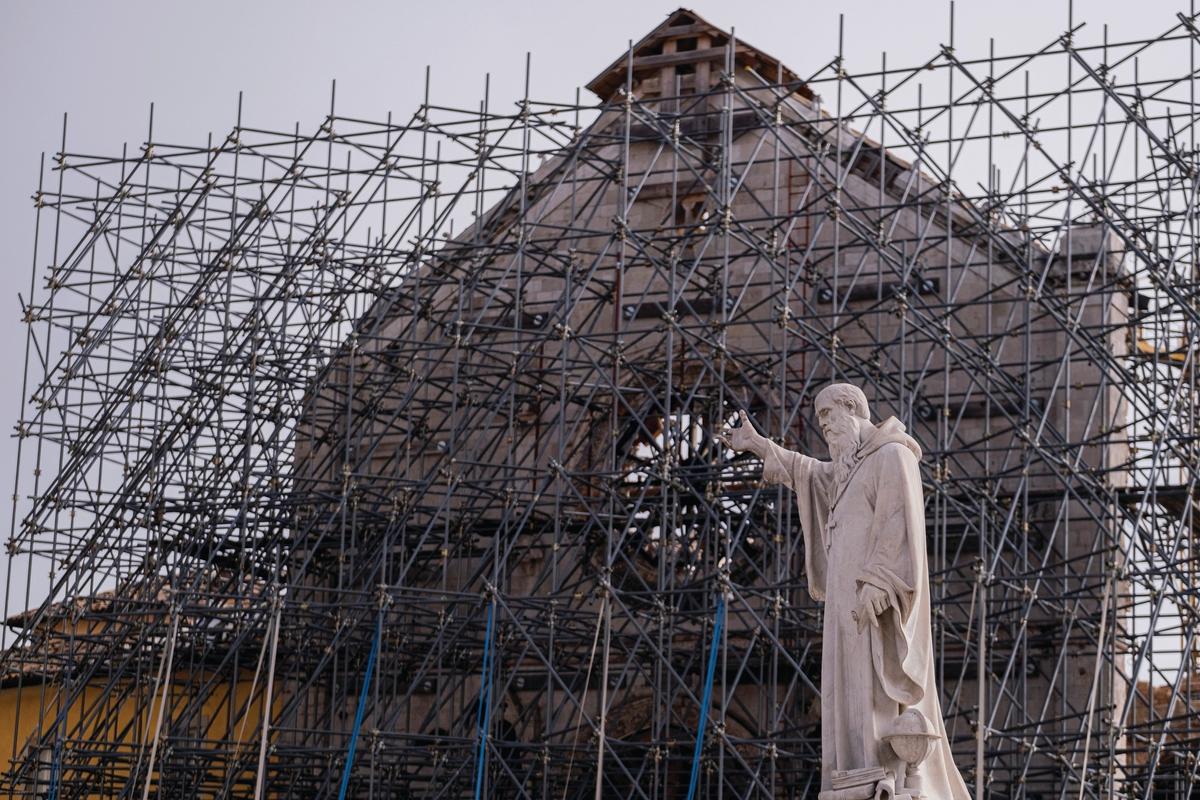Cathedrals, churches and basilicas across Italy are at risk of being razed by earthquakes that could strike at any moment. But the government is on a mission to protect some of the country’s most significant and vulnerable religious buildings from disastrous seismic shocks. A new national project backed with €250m from Italy’s multibillion-euro pot of EU Covid-19 recovery funding is unprecedented in Europe for its scale and reach, officials believe. However, they face a race against the clock to secure the funds needed to implement the plan.
One of Europe’s most earthquake-prone countries, Italy has been hit by numerous fatal seismic events in recent years. Many have been concentrated along the Apennine mountain range that forms the country’s spine, devastating historic religious buildings such as the 12th-century Basilica of San Benedetto in Norcia and Amatrice’s 15th-century Church of Sant’Agostino.
Insufficient funds mean authorities have had to focus on the most acute emergencies in recent years, says Marica Mercalli, the head of the culture ministry’s heritage safety department. In contrast, the anti-seismic plan will allow the ministry to distribute resources around the country. In efforts to mitigate the impact of future disasters, straps and chains will be wrapped around bell towers and shock-absorbing blocks fixed to foundations.
Project grants will be assigned to around 250 of the 840 structures owned by Italy’s Religious Buildings Fund, which include Florence’s Basilica di Santa Croce. The government’s local and regional chiefs of archaeology, fine arts and landscape have already submitted proposals for the buildings they believe should benefit. The ministry will assess buildings based on their historical value, importance for local communities and vulnerability to damage. To determine risk levels, officials have studied the existing seismic risk map of heritage sites—a geographic information system—together with data provided by environmental and geological organisations.
The list of churches receiving funds will be finalised by the end of March, before the grants are allocated by June. The resulting restoration and maintenance works are due to be completed by the end of 2025.
The national plan marks the culmination of efforts by the ministry to protect heritage sites from earthquakes, starting with the creation of the seismic risk map in 1992. The dedicated safety department under Mercalli was launched in 2019. The latest initiative is funded by Italy’s National Recovery and Resilience Plan, a €191.5bn investment package from the EU focused on sweeping judicial, administrative and energy reform.
The culture ministry’s €4.3bn portion of the funds will be channelled into nine “macro-projects” aimed at making museums more energy-efficient, promoting innovation in the film industry, and scrubbing up remote villages, parks and public gardens. However, the government must reach a series of targets to unlock the funding in instalments. Among 45 objectives Italy must fulfil by June, five relate to cultural macro-projects. If it fails to meet the targets, the EU could withhold payment of the next promised tranche, totalling €24bn.
The anti-seismic plan for churches is just one part of an €800m macro-project to protect Italian cultural heritage under threat from earthquakes. Around €180m will be used to convert five former army barracks around the country into climate-controlled depots for storing works salvaged from damaged religious buildings. The new centres, which will be fitted with art restoration facilities and exhibition spaces, will be operative by 2026, according to Angelantonio Orlando, a director of macro-projects at the ministry.
A further €200m will underwrite the construction of a new high-tech monitoring centre by 2025. Integrated with satellite surveillance systems, the facility will monitor heritage sites in high-risk seismic zones and support planned maintenance. “There is no doubt that satisfying the timetables is a major challenge,” Orlando says. “If we hit our targets, Italy’s heritage will be considerably safer.”


